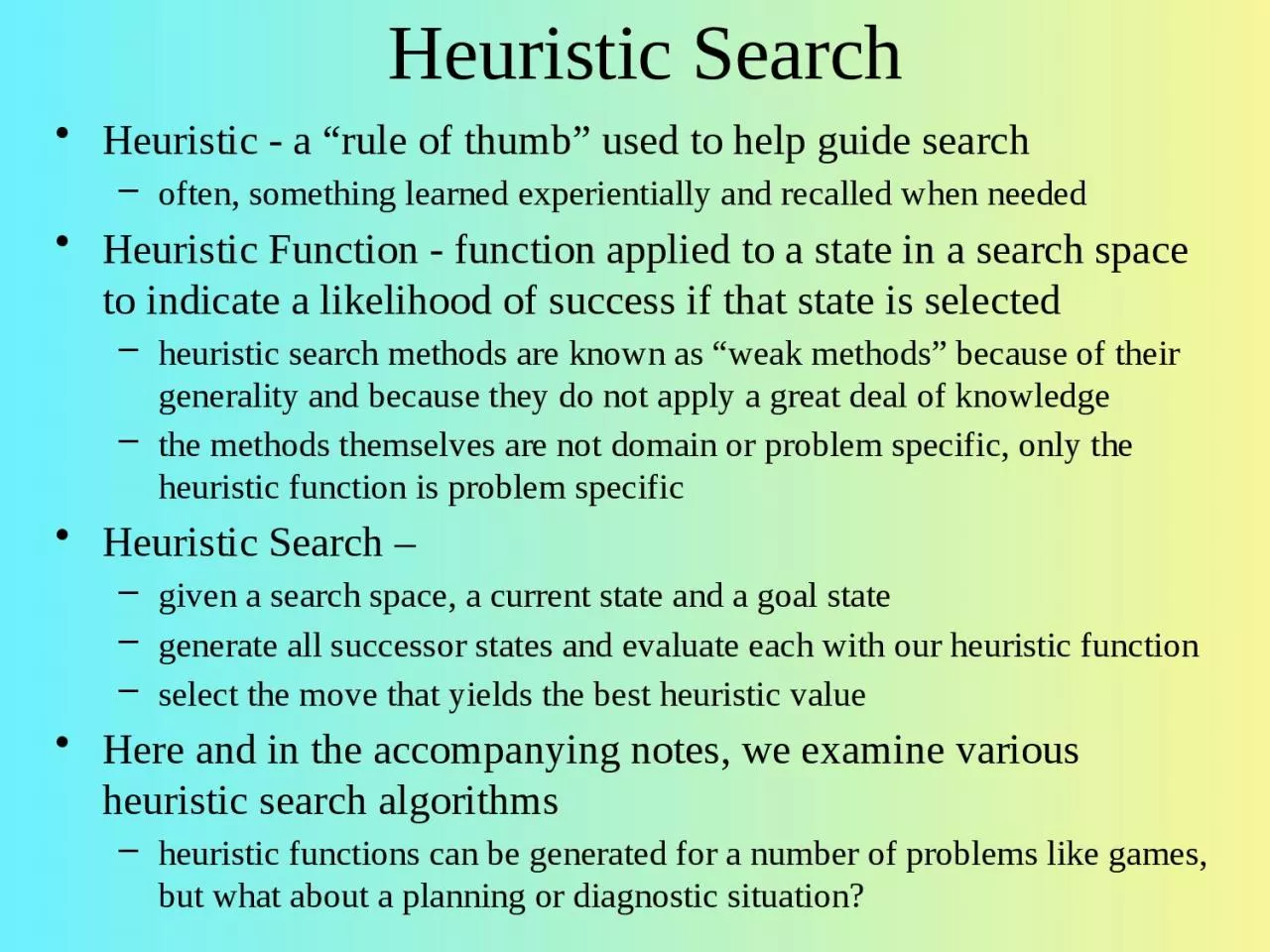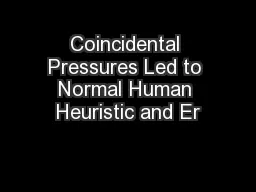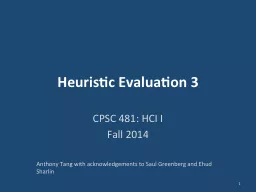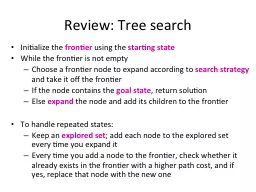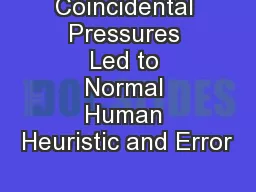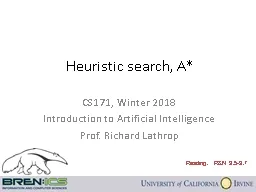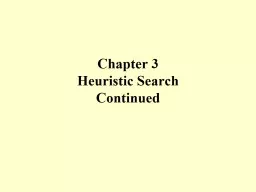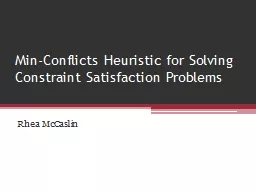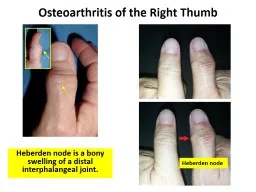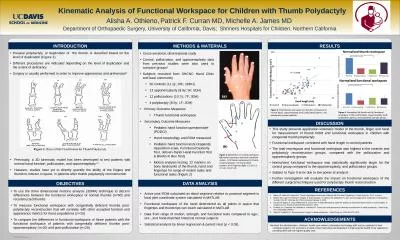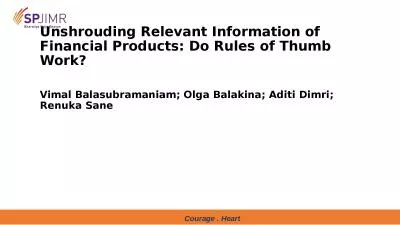PPT-Heuristic Search Heuristic - a “rule of thumb” used to help guide search
Author : faith | Published Date : 2023-11-04
often something learned experientially and recalled when needed Heuristic Function function applied to a state in a search space to indicate a likelihood of success
Presentation Embed Code
Download Presentation
Download Presentation The PPT/PDF document "Heuristic Search Heuristic - a “rule o..." is the property of its rightful owner. Permission is granted to download and print the materials on this website for personal, non-commercial use only, and to display it on your personal computer provided you do not modify the materials and that you retain all copyright notices contained in the materials. By downloading content from our website, you accept the terms of this agreement.
Heuristic Search Heuristic - a “rule of thumb” used to help guide search: Transcript
Download Rules Of Document
"Heuristic Search Heuristic - a “rule of thumb” used to help guide search"The content belongs to its owner. You may download and print it for personal use, without modification, and keep all copyright notices. By downloading, you agree to these terms.
Related Documents

